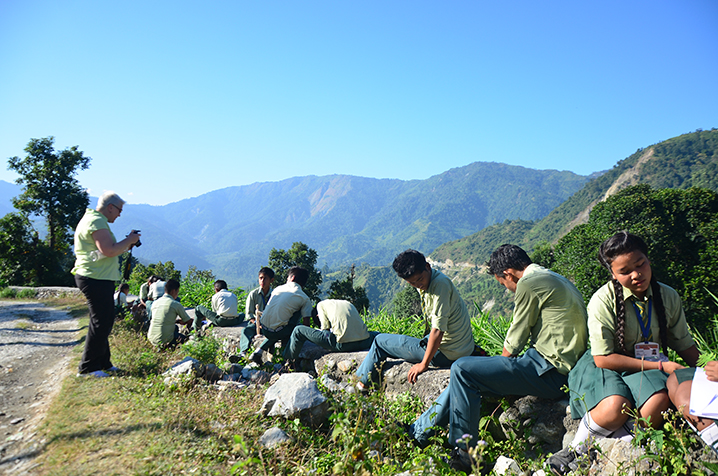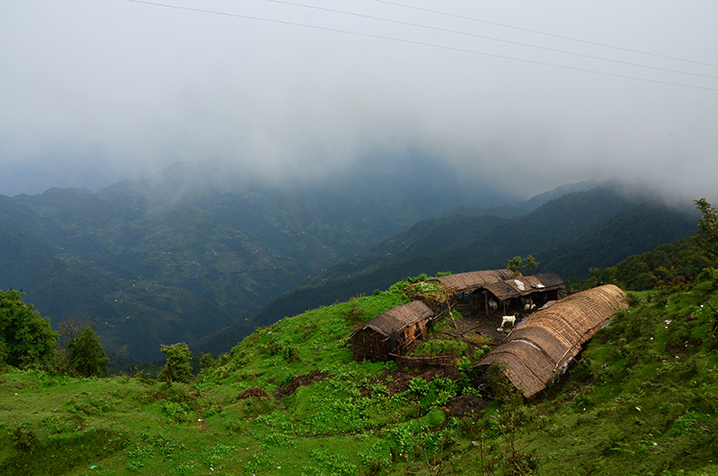Travels with us...
Enter Your Search Text :
"27 Years of weaving tourism consciousness in villages, empowering ecological pride and economical freedom"
... [+]Voluntourism : Eastern Nepal and Cross-Border Circuit
Voluntourism is one of the tool of tourism, which is mainly an initiative when both the tourism institution and tourists agrees to support the community, destination or a village with different social ... [+]Lingsey Kalimpong
Lingsey a remote village of Kalimpong Sub-Divison is situated at an altitude of 4800 ft. and is 24 km from Pedong & 52 km from Kalimpong Coordinates: 27°9\'46"N 88°40\'29"E. It is ... [+]
Welcome to Help Tourism
Almost all 'Protected Areas' in India are surrounded by communities who have been there for generations and have traditions dependent on the natural resources. With the fast degradation of the natural resources in India, mainly because of commercialization, we are left with little which can hardly support any kind of traditional livelihood.Hence, Help Tourism has tried to initiate an alternative livelihood among such communities who are interested in conservation and ownership of the natural resources around them through the creation of the Jungle Camps. Today, Jungle Camp is a brand of its own and spread all over east northeast India.
Jungle Camps
Almost all Protected Areas in India are surrounded by communities who have been there for generations and have traditions dependent on the natural resources.With the fast degradation of the natural resources in India, mainly because of commercialization, we are leftwith little which can hardly support any kind of traditional livelihood... readmore
Chilapata Jungle Camp |
Neora Valley Jungle Camp |
Sundarbans Jungle Camp |
 |
 |
 |
|
The Dooars are an extraordinary choice for the nature lovers and general visitors.Nestled in the heart of the picturesque Eastern Dooars at the foothills of the Eastern Himalaya and perched between Buxa Tiger Reserve and Jaldapara Wildlife Sanctuary, lies Chilapata Wildlife Sanctuary, the most important migration corridor of large herbivores such as One Horned Rhinos and Asiatic Elephants and an upcoming eco-tourism destination in Bengal. Considering the traditional migration pattern of the mega herbivores through the forest corridors, the ecological boundary of Chilapata is well spread out along the banks of Bania and Torsha rivers that bring in the fresh monsoon alluvials, thus support and protect the grassland ecosystem and the astounding diversity of flora and fauna of the park. Chilapata reportedly harbours 23 species of carnivores and herbivores, approximately 180 species of birds, 22 species of reptiles, several species of amphibians and a host of lesser fauna... readmore |
It is one of the last remaining pristine ecosystems of the Eastern Himalayas with its amazing Bio-diversity, and is home to many rare and endangered plants, animals and birds. It exhibits a rich variety of habitat as the area comprises the catchments and watershed of the Neora River with its tributaries. The Park with its dense forests is located on the tri-junction of Bhutan, Sikkim and West-Bengal, and its boundary extends from 30 m of altitude up to 3200 m on an area of only 88 square km. Though this sounds rather small, it has to be considered that due to the topographical features the surface of the Park is much larger. Fauna: Significance of Neora Valley National Park in the international context lies in the fact that it provides shelter and protection to various species of Wildlife included in the Red Data Book (R.D.B.) of IUCN and the appendices of CITES. The Park harbours more than 31 species of mammals, which include the Red Panda, Clouded Leopard, Goral, Wild Dog, Himalayan Black Bear, Leopard, Leopard Cat, Himalayan Thar, Royal Bengal Tiger.... readmore |
The Sundarbans National Park is a National Park, Tiger Reserve, UNESCO World Heritage Site and a Biosphere Reserve located in the Sundarbans delta in Indian state of West Bengal. This region is densely covered by mangrove forests, and is one of the largest reserves of the Bengal tiger. It is also home to a variety of bird, reptile and invertebrate species, including the salt-water crocodile. During the Mughal period (1203-1538), the local kings leased the forests of the Sundarbans out. The history of changes in legal status boasts a number of unique features including the distinction of being the first mangrove forest in the world to be brought under scientific management. The area was mapped by the Surveyor General as early as 1764 following soon after proprietary rights were obtained from the Mughal Emperor, Alamgir II, by the East India Company in 1757. The first Forest Management Division to have jurisdiction over the Sundarbans was established in 1869. The Sundarbans was declared a reserved forest in 1875-76, under the Forest Act..... readmore |
Top Destinations |
||
 |
Bike Trails

Bicycles are a major means of transport almost all over the Indian subcontinent. In most places it is the most convenient and accepted way of transport. It helps to make friends easily in the localities of visit. The Help Tourism Innovative Product (HTIP) Team has organized bike-hire facility with several of the network destinations, where dedicated bike trails have been identified to provide an insight experience of the place. At the same time, simply hire for leisure riding is also available. Keeping in view the adventure capacity of the region... readmore










